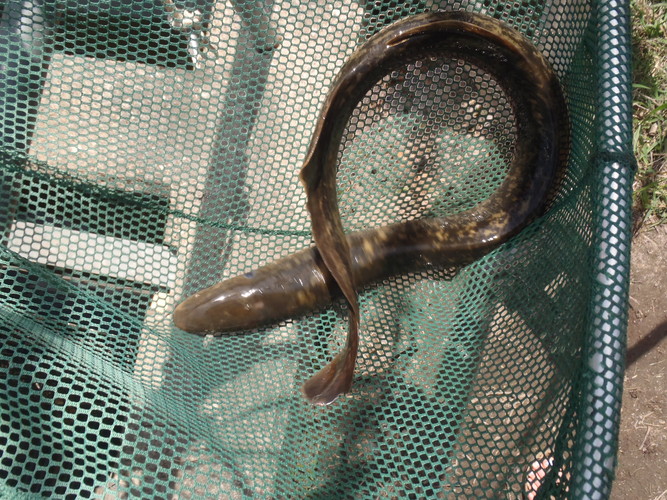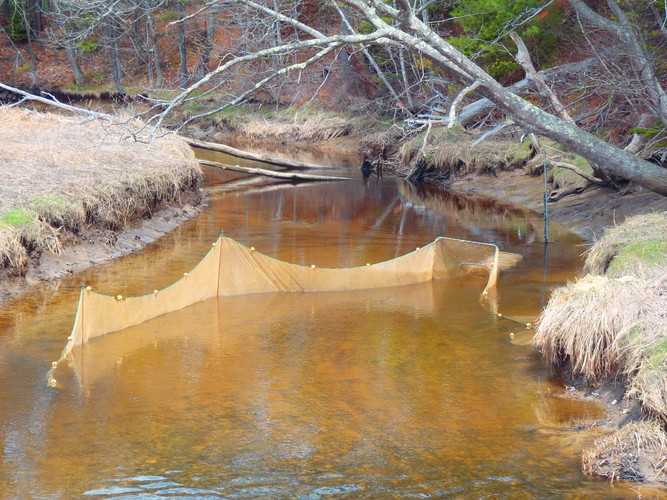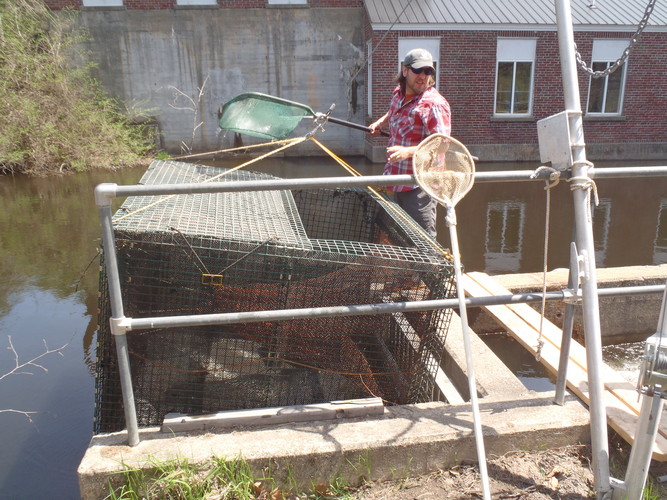The Wrack
The Wrack is the Wells Reserve blog, our collective logbook on the web.
The Wrack is the Wells Reserve blog, our collective logbook on the web.
 On Thursday, May 7, a little bit of history was made at the fish ladder located at the Kennebunk, Kennebunkport and Wells Water District. For the first time since restoring the fish ladder in December 2013 we successfully caught a fish that we had previously captured and tagged downstream at our Route 9 Branch Brook fishing net. Now, sea lamprey #181 is famous here in the research department!
On Thursday, May 7, a little bit of history was made at the fish ladder located at the Kennebunk, Kennebunkport and Wells Water District. For the first time since restoring the fish ladder in December 2013 we successfully caught a fish that we had previously captured and tagged downstream at our Route 9 Branch Brook fishing net. Now, sea lamprey #181 is famous here in the research department!
The fish ladder at the water district was restored in 2013 to more successfully connect viable upstream spawning habitats to the downstream waters of the dam, where several migratory fish species were known to be present. After restoring the run-down fish ladder, a large trap was placed at the top to catch any fish that successfully traverse the weirs.
Downstream of this fish trap, at the crossing of Branch Brook and Route 9, we have been setting a fyke net to catch any species moving about in this tributary. We are finding fish ranging from minnows to herring to eels. The main focus of this fishing, however, is to catch and tag trout and sea lamprey. These are the species that will most likely swim farther up the river for spawning or growth.
After collecting length and weight information on any brook trout, brown trout, and sea lamprey we place a small Passive Integrated Transponder (PIT) under the fish's skin or just inside the body cavity. Each tag has a unique number. These tags can be scanned upon the fish's recapture.
 From spring to fall of 2014, and beginning in late April of this year, our research staff has caught and tagged over 50 fish, but this week was the first time we tagged a fish at our fyke net and then captured it again above the fish ladder.
From spring to fall of 2014, and beginning in late April of this year, our research staff has caught and tagged over 50 fish, but this week was the first time we tagged a fish at our fyke net and then captured it again above the fish ladder.
May 5 was like any other day of fishing at the Route 9 fyke net; our catch included numerous golden shiners, three-spine sticklebacks, some river herring, and Atlantic tomcod. This was even a successful day catching larger fish — two brown trout and four brook trout were processed and tagged. Finally came a single sea lamprey, weighing in at 720 grams, measuring 74 centimeters, and tagged with PIT #181.
Just two days later, the research staff went to check the fish trap and much to our surprise there was a familiar looking sea lamprey! Familiar because we could see there was a piece of its tail missing from where we took a clip for a complementary study looking at isotopes and portions of the fish’s life spent in salt and fresh water. Sure enough, using our handheld electronic scanner we discovered that this was sea lamprey #181, caught just two days prior. This means that in less than 48 hours this fish was caught by a net, handled by people, returned to the river, swam a distance of roughly 1¾ miles, made its way up the fish ladder over 12 weirs and pools spread over 55 feet, for a vertical climb of 4.5 feet — what a survivor!
After a quick celebration and congratulations to the sea lamprey we returned it to the river so it could continue its journey to a suitable spawning habitat.
Sea lampreys often have a poor reputation, possibly due to their somewhat scary and archaic body and mouth features, but more likely due to the trouble it has caused in the Great Lakes region. This fish is considered parasitic, feeding mostly on other fish. Despite its bad rap, research suggests that sea lamprey provide many benefits to coastal rivers such as Branch Brook. These fish are moving upstream for spawning, which includes building little underwater nest. This requires moving around gravel and rocks, which in turn stirs up invertebrate communities that other fish species can feed on. After spawning, sea lamprey die in the river and as their bodies break down, nutrients are added to the system. 
So a big thank you to sea lamprey #181 — not only for its biological contributions but also for showing us that after the restoration efforts, the fish ladder is being put to good use! In the second full year of the functioning fish ladder we hope to have many more recapture stories to share!
Read more info about sea lamprey here.